Tasty waste
Microbes ferment certain food because it gives them energy to grow and divide. Fermentation is the conversion of sugars in an anoxic (oxygen free) environment. This process releases energy (for the microbe) and a waste product. By chance, we humans tend to like the waste product of the fermentation process. Do you like beer and wine? These drinks are made by fermenting yeasts like Saccharomyces cerevisiae, with alcohol as a waste product. More a fan of yoghurt or sauerkraut? These products get their typical taste from fermenting lactic acid bacteria like Lactobacillus and Streptococcus, with lactic acid as a waste product. In the case of yoghurt, bacteria are added to start fermentation. Sauerkraut, however, used to be a product of spontaneous fermentation. You would never know exactly which microbes did the job.
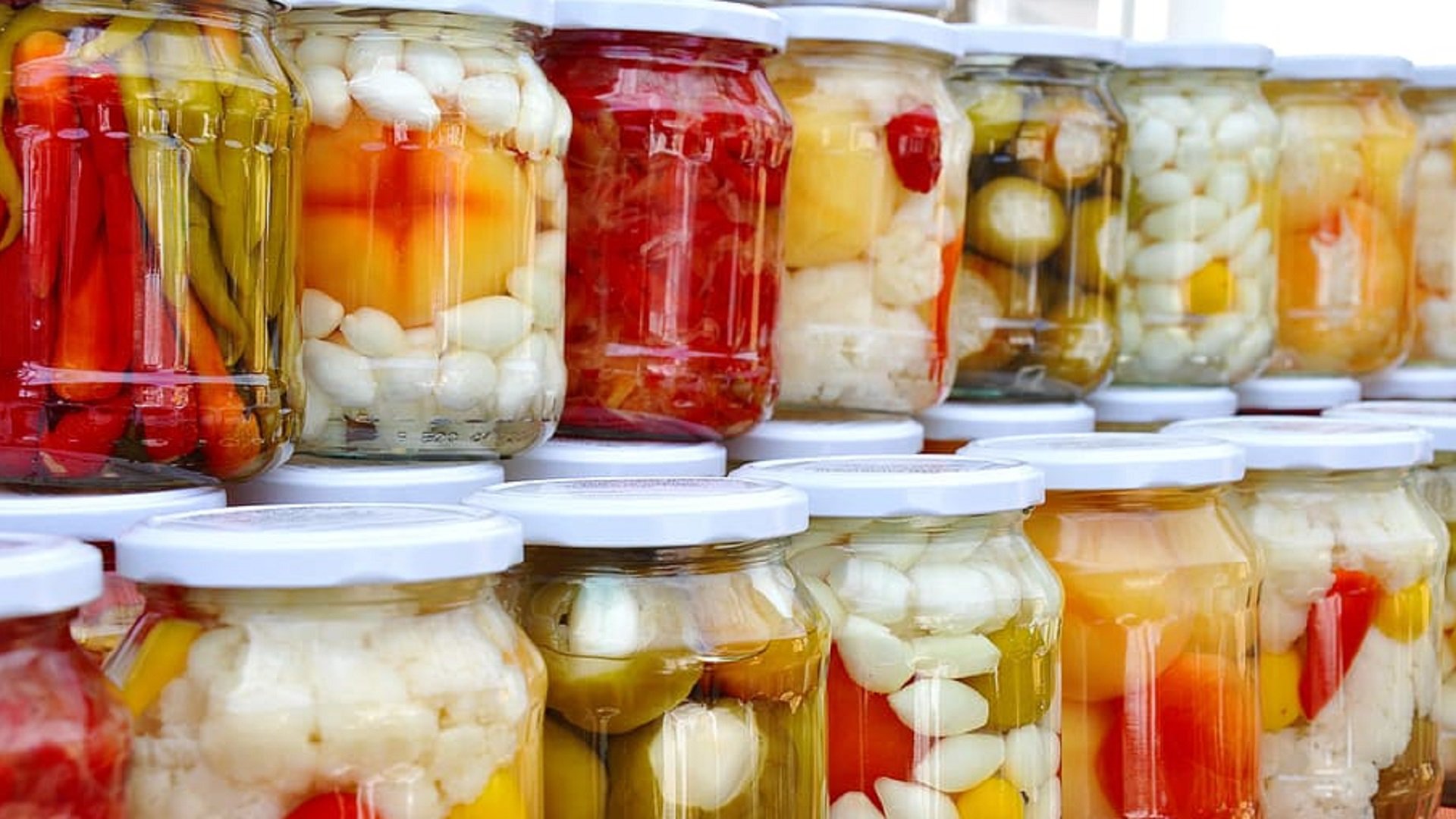
In Europe, people have been fermenting vegetables for over centuries, in order to increase shelf life. By doing this, people could also eat vegetables in the winter time.
Six food groups?
You don’t immediately think about it, but fermented food contains loads of living microbes. Those are a good addition to a healthy diet with the five basic food groups. Eating food that is rich in microbes is important, because it complements our gut microbiota. The microbiota consists of non-pathogenic bacteria, fungi and yeasts that, amongst others, help us digest our food. The more diverse this ecosystem is, the better. In the Western world, we are less and less exposed to microbes in our surroundings and in our food. Nevertheless, we need them quite desperately. Our immune system gets disrupted because it meets less microbes. As a result, the body sometimes reacts unduly to things that are not harmful at all. As a consequence, there is an increase in food allergies, asthma and eczema in the Western world. This is called the hygiene hypothesis.

Playing outside is good for you and your microbes. Don’t forget to wash your hands before dinner. Cade Martin, Dawn Arlotta, USCDCP via pixnio.com
Tasty and healthy
Not only the microbes themselves, but also the process of fermentation makes fermented products healthy. For example, the microbes produce vitamins, such as B2 (riboflavin), B9 (folic acid) and B12 (cobalamin). These vitamins are important for making new blood cells, amongst others. Furthermore, fermenting microbes break down food substances that are not easily digestible for us, and they bind potential toxins. Lastly, fermentation increases shelf life of food. The good, fermenting microbes colonize the food product before harmful microbes get the chance. The two most common end products of fermentation, alcohol and lactic acid, are poisonous for other bacteria. Therefore, fermented food doesn’t spoil quickly.
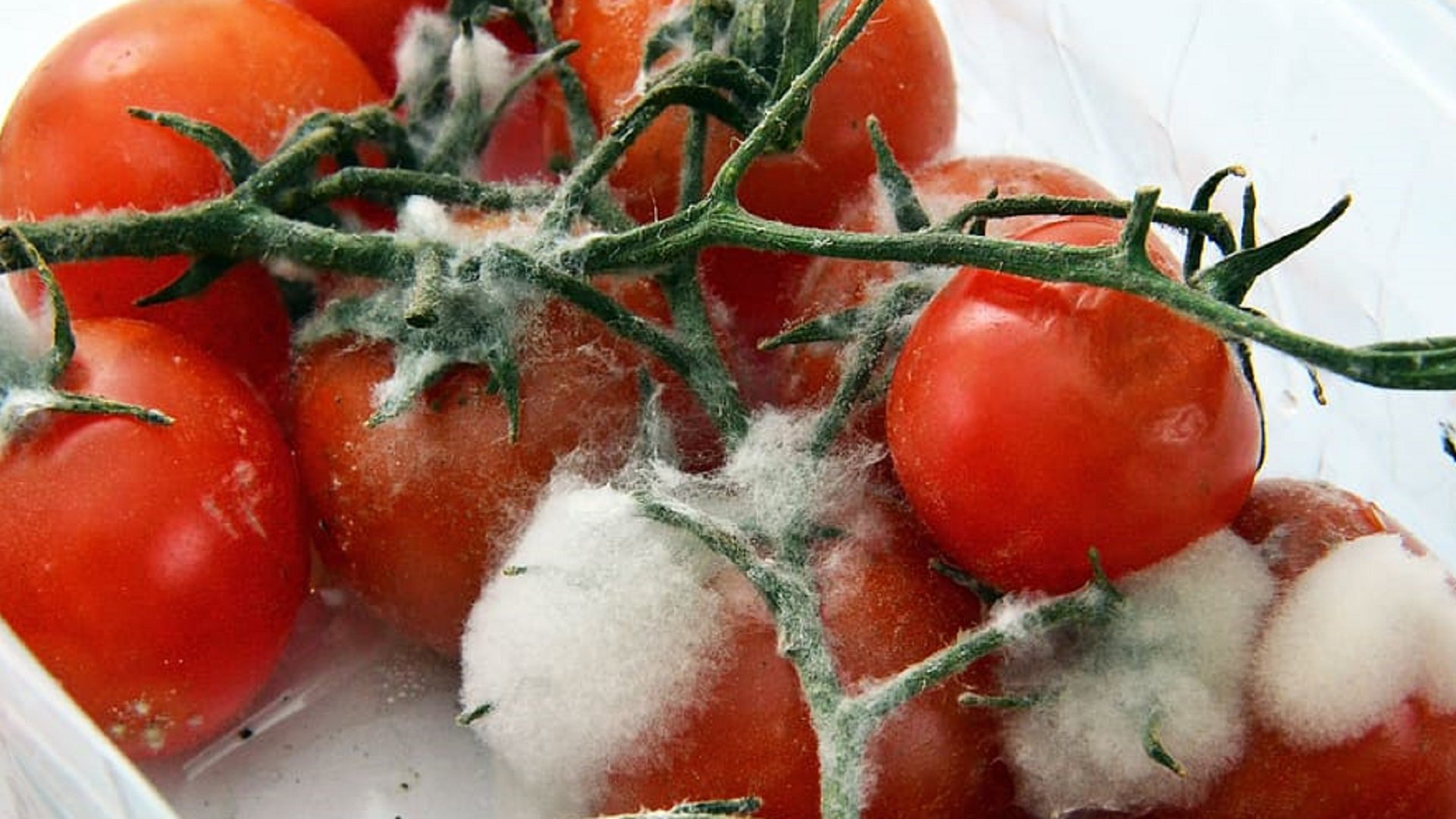
These tomatoes are moldy, and therefore not edible. Fermentation could have increased the shelf life of these tomatoes.
Let’s get energized
How do microbes make from wheat, or wine from grape juice? A short chemistry lesson. Microbes ferment in order to make ATP (adenosine triphosphate). ATP is the ‘gasoline of cells’, energy that can be used right away. Glucose, in this story, is crude oil: it can become a usable source of energy, but only after some manipulation. NAD+ can be compared to a battery, that helps the process to get going. We start at grape juice, this is full of glucose. Glucose is converted into pyruvate by wine yeasts. This produces ATP, but also costs NAD+. The NAD+-battery cant stay empty, because it is needed to perform more reactions. This is why pyruvate is converted into alcohol and CO2, while at the same time the NAD+-battery is reloaded. In the end, the wine yeast converts glucose into ATP (for itself), alcohol (“for us”), and CO2. And you can enjoy your glass of Bordeaux.
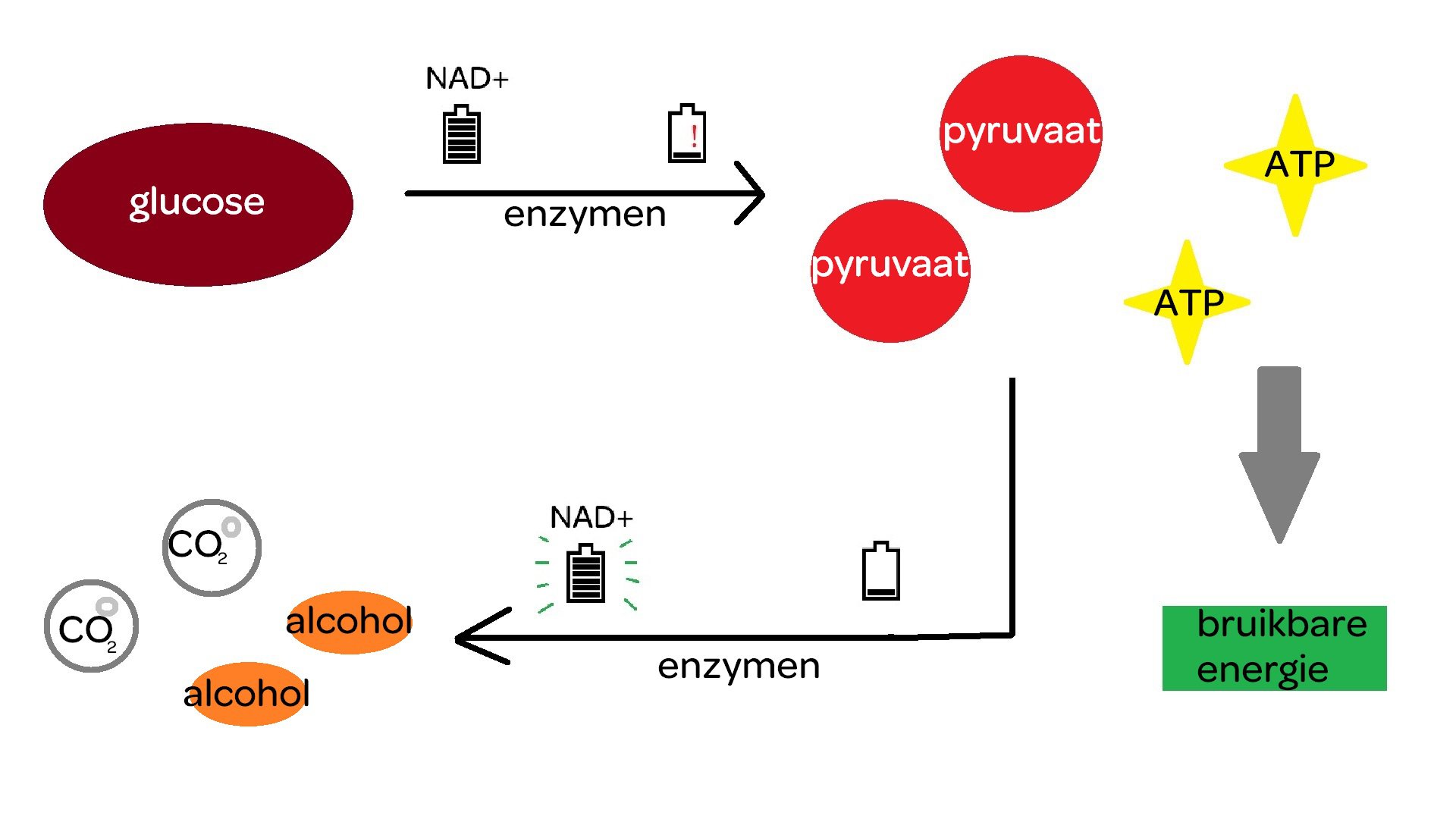
Glucose is converted into pyruvate and ATP. ATP is a usable energy source for the yeast. Pyruvate is converted into alcohol and CO2, or carbon dioxide. This gas escapes the barrel before the wine bottled.
Backup plan
For many (micro)-organisms, fermentation is a back up energy supply for when there is no oxygen around. Fermentation is a lot less efficient than cellular respiration (the thing we do by breathing). It only yields two ATP molecules per glucose molecule, while the process of cellular respiration results in up to thirty ATP from the same glucose molecule. But if oxygen is not around, there is no other option. We do the same thing. When you do sports very intensively, your muscles will be working so hard that you can’t breath enough. Without oxygen, your muscles switch to fermentation. By doing this, they produce lactic acid, that acidifies the muscles. This is what you feel as muscle strain. For some microbes, for example Bacteroidetes, oxygen is even toxic. This is why Bacteroidetes is safely inside your oxygen-free gut, fermenting your food.

During a race you give all you have. Chances are big that you will feel the waste product of anaerobic respiration the day after: muscle strain!
Wild Microbe Ale
It is finally time to talk about our favorite fermentation process: brewing Micropia beer. In 2018, lab technicians from Micropia went on a yeast-safari in the ARTIS zoo. At several places in the park, for example overly ripe fruits on trees, we took samples. The ultimate goal was to find wild microbes that can be used to a special craft beer. The samples were cultured in order to investigate if a yeast was found, and to multiply the amount of yeast to a number that could be used by the brewer. Oedipus Brewery made a delicious craft beer from the best sample: Wild Microbe Ale. The unique fruity taste is the result of not one, but two fermenting micro-organisms: the wild yeast Pichia barkeri and the lactic acid bacteria Lactobacillus brevis.
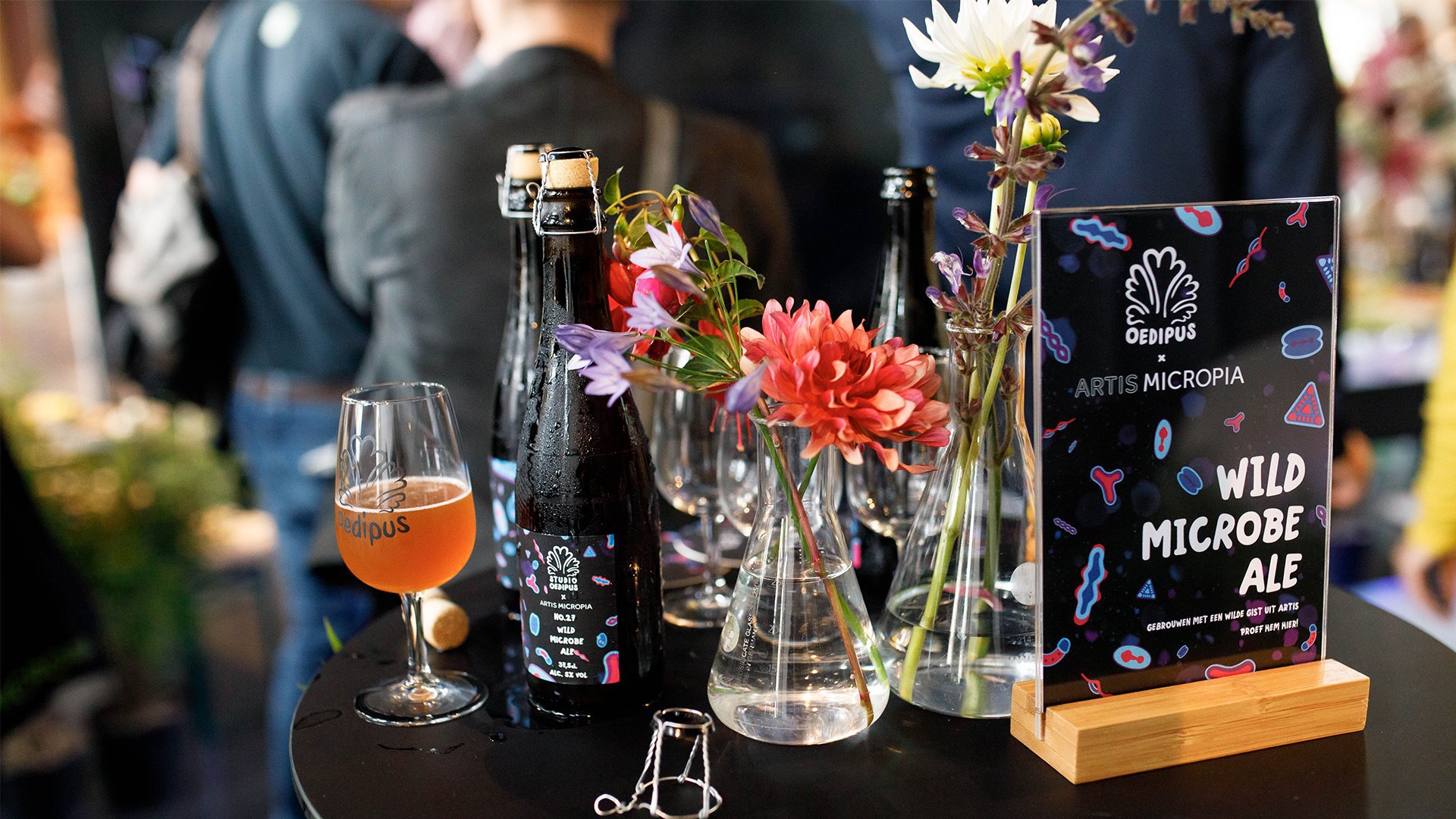
Wild Microbe Ale, the one and only Micropia beer.
Biofuel
Apart from food, microbes can also make fuel. From this year on, all Euro-95 gasoline in the Netherlands is actually E10-petrol: 90% normal petrol and 10% bio-ethanol, produced via fermentation. Also hydrogen, maybe the fuel of the future, can be produced by micro-organisms. Some Clostridium-bacteria produce hydrogen as a residual product of fermentation. But why don’t all cars drive on biofuel already? The biggest challenge lies in the starting materials. Sugar rich crops, such as corn and beetroot, are very suitable, but you can also eat them. A bit of a shame, you could say. Nowadays, also waste products such as corn stalks are used as a starting material. It’s still a long way before all fuel will be replaced by fermented biofuel, because growing the crops takes such a big amount of farming land.
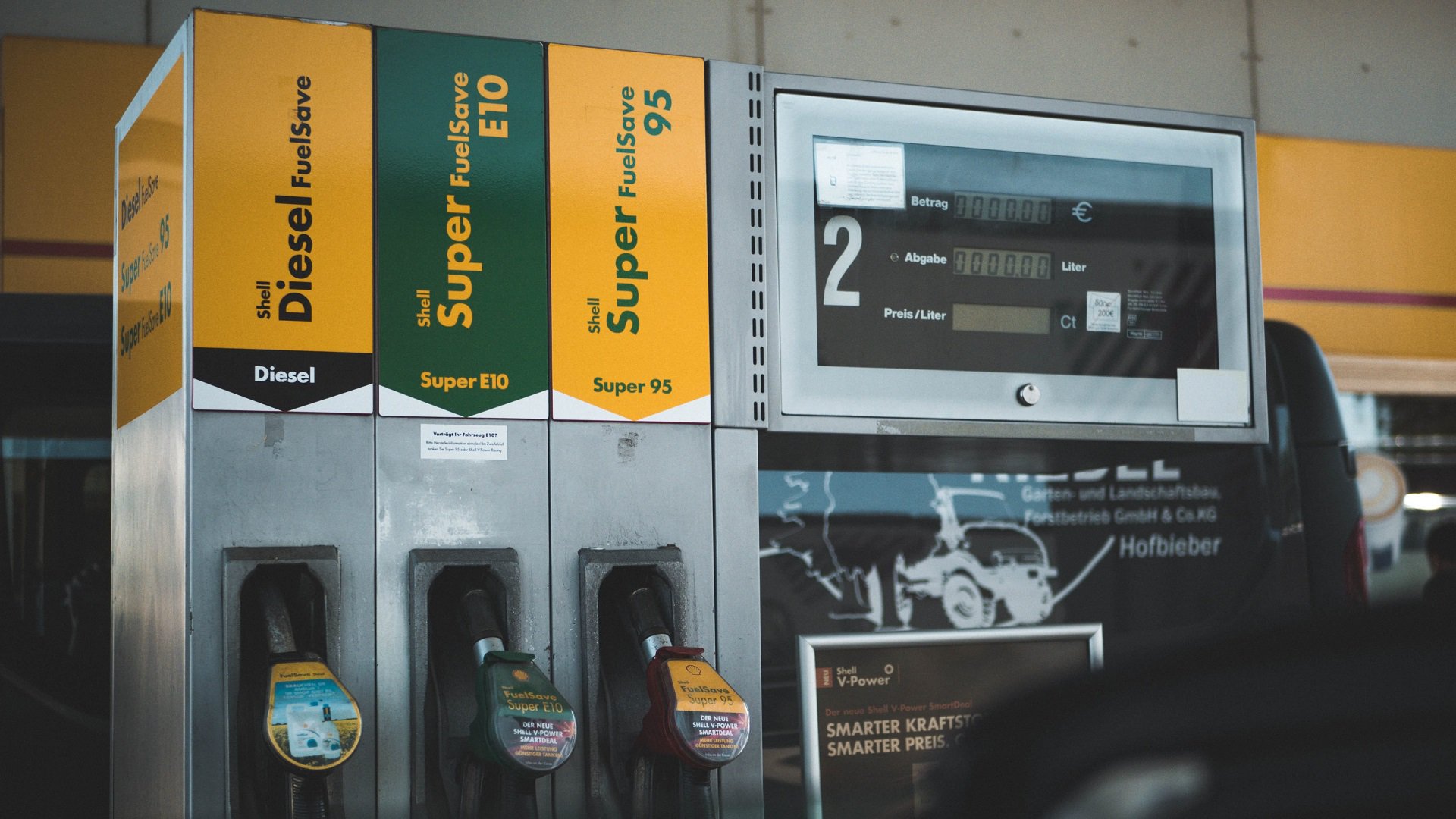
A product of fermentation in your gas tank. Since October 2019, all regular gasoline in the Netherlands is mixed with 10% bio-ethanol.
